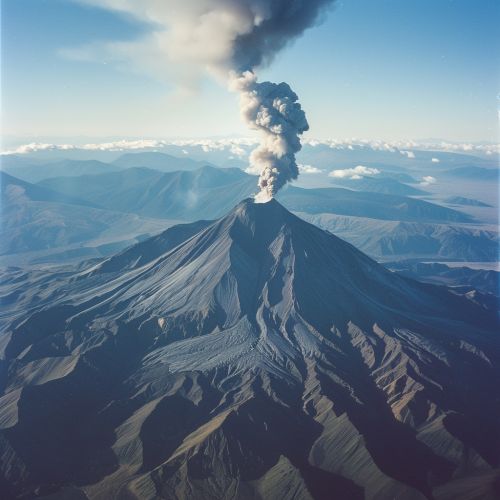Death Mountain
Introduction
Death Mountain is a term that refers to various geological formations, mythological locations, and fictional settings across different cultures and media. This article delves into the multifaceted nature of Death Mountain, exploring its geological characteristics, mythological significance, and representation in popular culture.
Geological Characteristics
Death Mountain, in its geological context, often refers to volcanic formations. Volcanic mountains are formed through the accumulation of lava, tephra, and volcanic ash. These mountains are typically located at tectonic plate boundaries, where the Earth's crust is either converging or diverging.
Formation
Volcanic mountains form through a series of eruptions that expel magma from the Earth's mantle. When magma reaches the surface, it is termed lava. Over time, successive layers of lava and ash build up to create the mountain. The Ring of Fire is a prime example of a region with numerous volcanic mountains, including the famous Mount Fuji in Japan.
Types of Volcanic Mountains
There are several types of volcanic mountains, including shield volcanoes, stratovolcanoes, and cinder cone volcanoes. Shield volcanoes, such as Mauna Loa in Hawaii, have gentle slopes and are formed by low-viscosity lava that can travel long distances. Stratovolcanoes, like Mount St. Helens, are characterized by steep profiles and periodic explosive eruptions. Cinder cone volcanoes are the smallest type and are formed from tephra, volcanic ash, and other pyroclastic materials.


Mythological Significance
Death Mountain also holds a significant place in various mythologies around the world. These mythological mountains are often depicted as the abodes of gods, spirits, or other supernatural entities.
Greek Mythology
In Greek mythology, Mount Olympus is considered the home of the Olympian gods. While not explicitly named Death Mountain, it serves as a place where mortals rarely tread, and those who do often face dire consequences. The mountain is a symbol of divine power and the boundary between the mortal and divine realms.
Hindu Mythology
In Hindu mythology, Mount Meru is considered the center of the universe and the abode of gods. It is often depicted as a golden mountain surrounded by concentric ranges and oceans. The mountain is a symbol of cosmic order and spiritual enlightenment.
Norse Mythology
In Norse mythology, the concept of a sacred mountain is embodied in Yggdrasil, the World Tree. While not a mountain in the traditional sense, Yggdrasil connects the nine worlds and serves as a cosmic axis. The roots of Yggdrasil extend into the underworld, making it a bridge between life and death.
Representation in Popular Culture
Death Mountain is a recurring element in various forms of popular culture, including literature, video games, and films. These representations often draw inspiration from its geological and mythological counterparts.
Literature
In J.R.R. Tolkien's Middle-earth legendarium, Mount Doom is a volcanic mountain located in the land of Mordor. It is the only place where the One Ring can be destroyed. The mountain's fiery eruptions and treacherous terrain make it a formidable obstacle for the protagonists.
Video Games
In the The Legend of Zelda series, Death Mountain is a prominent location. It is often depicted as a volcanic region inhabited by the Goron race. The mountain serves as a significant challenge for players, featuring complex dungeons and powerful enemies.
Films
In the film "Indiana Jones and the Temple of Doom," the titular temple is located within a mountain that holds many dangers and secrets. While not explicitly named Death Mountain, the setting evokes similar themes of peril and adventure.
See Also
- Volcanic Eruption
- Mythological Mountains
- Geological Formations
- Ring of Fire
- Mount Olympus
- Mount Meru
- Yggdrasil
- Mount Doom
- The Legend of Zelda
